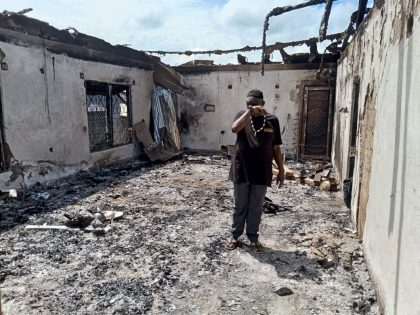The magical disposition
Township "Living," white people and the limits of "empathy"

Image: Miville Tremblay via Flickr CC.
If a white family spends a month in a shack, it’s called “brave,” an exercise in “empathy,” and above all, deemed newsworthy enough to gain international coverage. If a black family spends a lifetime in a shack, it’s called South Africa, and it certainly won’t make the paper.
I groaned as I opened David Smith’s Guardian piece on the white family that spent a month in a shack in Mamelodi, one of the largest African townships in South Africa with close to half a million residents living on the outskirts of Pretoria, and blogged about it. Predictably, the story has been all over the South African press. Then foreign correspondents picked up on it, David Smith among them. Smith writes:
Nearly two decades after racial apartheid bit the dust, its legacy persists in spatial segregation between affluent suburbs and neglected townships, with millions of black people still commuting from the latter at great expense of time and money.
“It’s just so easy to live in a bubble in South Africa and especially for the middle- to upper-class to build higher walls rather than building bridges,” Ena continued. “This is a way to create empathy, a way to build bridges and a way to see how the majority of this country lives. It really is very easy to be oblivious of it.
In the era of ubuntu, this is standard fare. There are two ways to read this kind of claim. First, there’s what I like to think of as the “new age” position (no relation to the old SACP organ or the Gupta rag): the problem lies not on the terrain of the structural, but rather in the subjectivities of South Africa’s residents. If only people – and by this, they always mean white people – would acquire that magical disposition called empathy, everything would be fine.
This sentiment, while surely well intended, is ultimately a symptom of white narcissism. The very framing of the position requires white experiences and the transformation of white subjectivities, with Mamelodi’s black residents rendered passive scenery. At best, they appear in the narrative as bearers of disbelief. While in theory this understanding of “empathy” is tied to knowing the other, as it plays out here, the focus is entirely on the shock of whites out of place.
The “new age” position then renders blacks for whites, much like the concept of diversity so popular in American discussions of de facto segregation in public education. Rather than actually talking about integrating schools, “diversity” shifts the focus toward the level of experience. No one uses the word to describe a handful of white kids in a black school, but as soon as there are people of color in a white space, it becomes “diversity,” a valuable learning experience for white people. Diversity, rather than an end, becomes a means – white people can “broaden their horizons” or some other platitude, and hopefully they’ll develop some empathy. What of actually integrating the schools? It’s in the same “to do later” stack of papers as desegregating residential areas in South Africa.
But there’s a second reading of the quote, the liberal reading, that is actually worth engaging. This position assumes that there is a logical progression from empathy to the overcoming of the structural legacy of apartheid. But note well the way that this progression is developed in Smith’s piece:
Many also expressed hope that the media coverage would move politicians to action. Nkambule’s niece, Velly, 27, said: “I was very glad they came to see how we are suffering here and how much we spend on taxis and paraffin. The community is very happy and we wish they could stay forever.”
It’s not actually about knowing the other as a precondition for desegregation. The appearance of white people in the township means publicity, and publicity means hope. When a handful of white people end up living in Blikkiesdorp, or when an insignificant number of white people live in shacks on the outskirts of whatever city, or when Zuma gets all rainbow nation and upgrades a dozen white people’s shacks outside of Pretoria, the white media eats it up. It’s pretty shocking that it takes a troupe of white people play-acting poverty to attract some coverage of the housing crisis in this country, but what did you expect? Empathy? “They said it was a designer shirt and I shouldn’t wear it here, so I took it off,” he [the dad] says. “I need people to see that I am here and living like they are.”



















